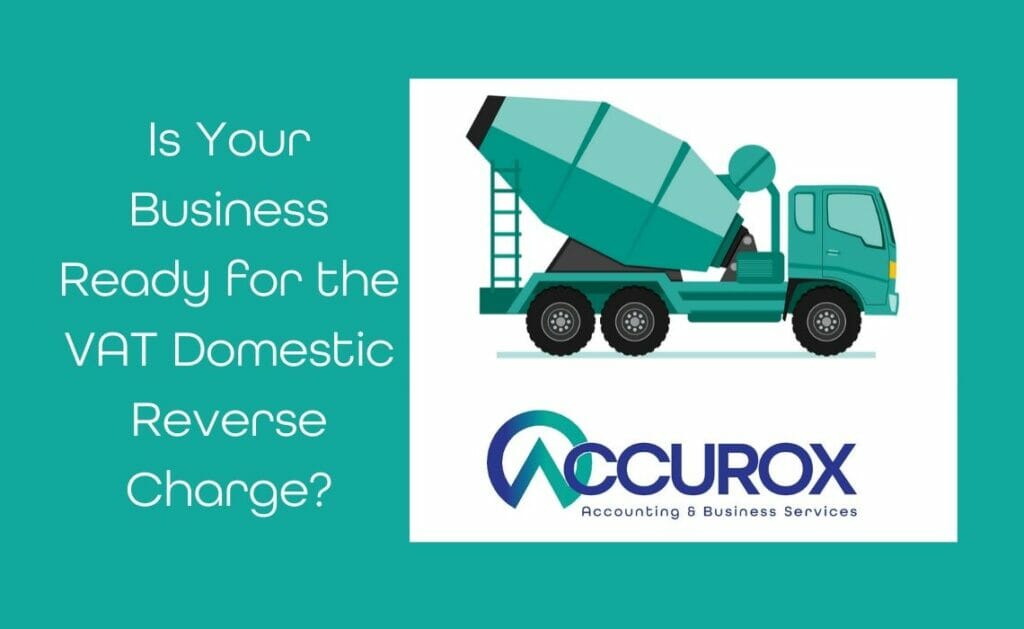The VAT domestic reverse charge which was due to begin in 2020 has been delayed to March 1st, 2021. The delay follows a previous reschedule to avoid the impact of Brexit. The new delay is because of the impact the coronavirus has had on the economy and the concern that the added administrative burden will be the final straw for many in the construction industry.
The VAT domestic reverse charge is essentially a change in the way VAT is handled for some construction services and the materials used, where they are supplied directly by construction and trade businesses. It is only applicable to companies registered for VAT.
The reprieve to 2021 is certainly welcome. Businesses are already struggling to stay afloat following the lock down and the social distancing rules that still need to be observed. Despite this, it is important to prepare for the eventual introduction. The better prepared you are for the transition, the less likely it is to have an adverse effect on your business.
How the VAT Domestic Reverse Charge Affects Your Business
To clarify, DRC it is an extension of the CIS (Construction Industry Scheme) and applies to transactions between contractors and sub-contractors. It dictates that the recipient, though not the final customer (i.e. the person or body who will use the building or improvements), of construction services and goods account for the VAT to HMRC rather than paying it to the supplier. DRC only applies domestically and not to services overseas.
What is the purpose of the DRC?
According to HMRC, the reason it is being introduced is to reduce fraud in the building and construction industries. Fraudulent sub-contractors were able to charge VAT to their customers and subsequently failed to declare it to HMRC, amounting to a huge loss in tax revenue. The DRC system is already working well in other sectors including mobile phones.
Importantly, if you are incorrectly charged VAT, it’s believed HMRC are unlikely to allow it to be reclaimed, so it’s important to assess your systems, identify where VAT should be declared through DRC and ensure they are claimed in the correct way.
Who Does the Domestic Reverse Charge Apply to?
HMRC’s website explains the VAT reverse charge applies to sub-contractors who answer yes to all the following questions:
- Are any of the supplies you are making within the scope of the CIS?
- Is the supply standard or reduced-related?
- Is your customer VAT registered?
- Will you payment be reported under CIS?
- Are you sure the customer is not an end user?
What Does the Domestic Reverse Charge Apply to?
DRC applies to certain services charged at either standard or reduced rate VAT (it does not apply to the 0% rate). Below is HMRC’s lists of included and excluded services.
Included
- construction, alteration, repair, extension, demolition or dismantling of buildings or structures (whether permanent or not), including offshore installations
- construction, alteration, repair, extension or demolition of any works forming, or to form, part of the land, including (in particular) walls, roadworks, power-lines, electronic communications apparatus, aircraft runways, docks and harbours, railways, inland waterways, pipe-lines, reservoirs, water-mains, wells, sewers, industrial plant and installations for purposes of land drainage, coast protection or defence
- installation in any building or structure of systems of heating, lighting, air-conditioning, ventilation, power supply, drainage, sanitation, water supply or fire protection
- internal cleaning of buildings and structures, so far as carried out in the course of their construction, alteration, repair, extension or restoration
- painting or decorating the internal or external surfaces of any building or structure
Excluded
- drilling for, or extraction of, oil or natural gas
- extraction (whether by underground or surface working) of minerals and tunnelling or boring, or construction of underground works, for this purpose
- manufacture of building or engineering components or equipment, materials, plant or machinery, or delivery of any of these things to site
- manufacture of components for systems of heating, lighting, air-conditioning, ventilation, power supply, drainage, sanitation, water supply or fire protection, or delivery of any of these things to site
- the professional work of architects or surveyors, or of consultants in building, engineering, interior or exterior decoration or in the laying-out of landscape
- the making, installation and repair of artistic works, being sculptures, murals and other works which are wholly artistic in nature
- sign writing and erecting, installing and repairing signboards and advertisements
- the installation of seating, blinds and shutters
- the installation of security systems, including burglar alarms, closed circuit television and public address systems
What can you do to prepare?
- Develop a system to check whether your sales or purchases qualify to be processed under the new rules. This entails understanding what falls into CIS and the reverse charge. In addition, you will need to identify the end user for the reverse charge.
- Review and update accounting systems to process the reverse charge. For internal accounting update your policies and offer training to your staff. Ensure they are familiar with the requirements the new rule will introduce and that the charge is applied correctly. For external accounting, speak to your accountant to ensure they are aware of how this will impact your business. Seek advice on how to minimise disruption.
- Take control of your finances to bring clarity and transparency. Use the right software to track purchases, sales and invoices. This will help you keep track of real costs and what your sub-contractors are charging at the click of the button.
- Use one VAT system for any particular sub-contractor in order to avoid confusion.
- Construction businesses can become dependent on VAT to ease cashflow until it is recovered by HMRC. Assert control of your cashflow with clear and accurate cashflow forecasting to wean your business off this dependency.
March 2021 seems a long way off. Nevertheless, it will take time to prepare your business. HMRC has indicated that it will be applying a “light touch” for the first 6 months of implementation. Although this may be true, returns will be monitored carefully.
For further information read HMRC’s guidance on DRC. Equally, contact us here. We will be happy to go through it with you in the context of your particular circumstances.







